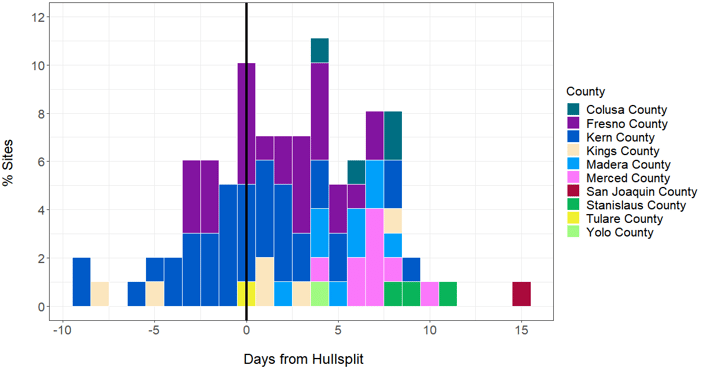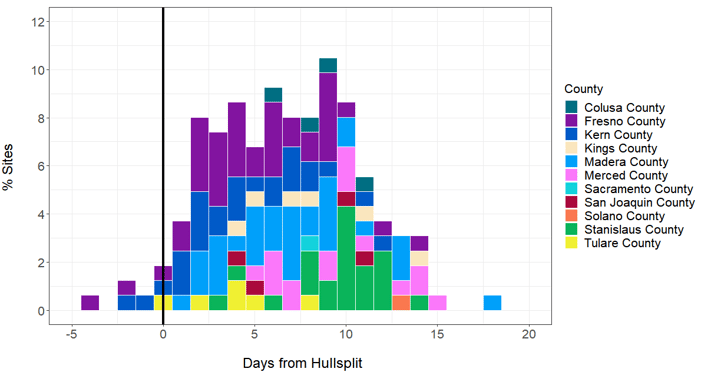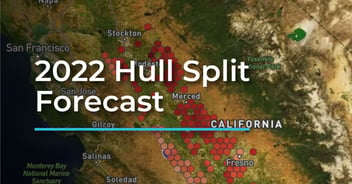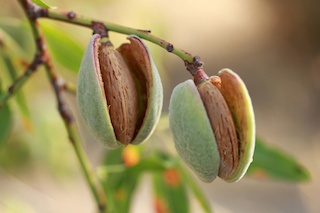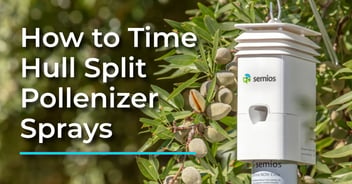Around hull split this year, we heard from a lot of growers that they have historically based their first hull split applications on a 1700 degree day threshold.
While this is a model threshold that is trusted in certain regions for pistachios, it is important to note that UCANR Integrated Pest Management recommends very specific application timings for almond hull split.
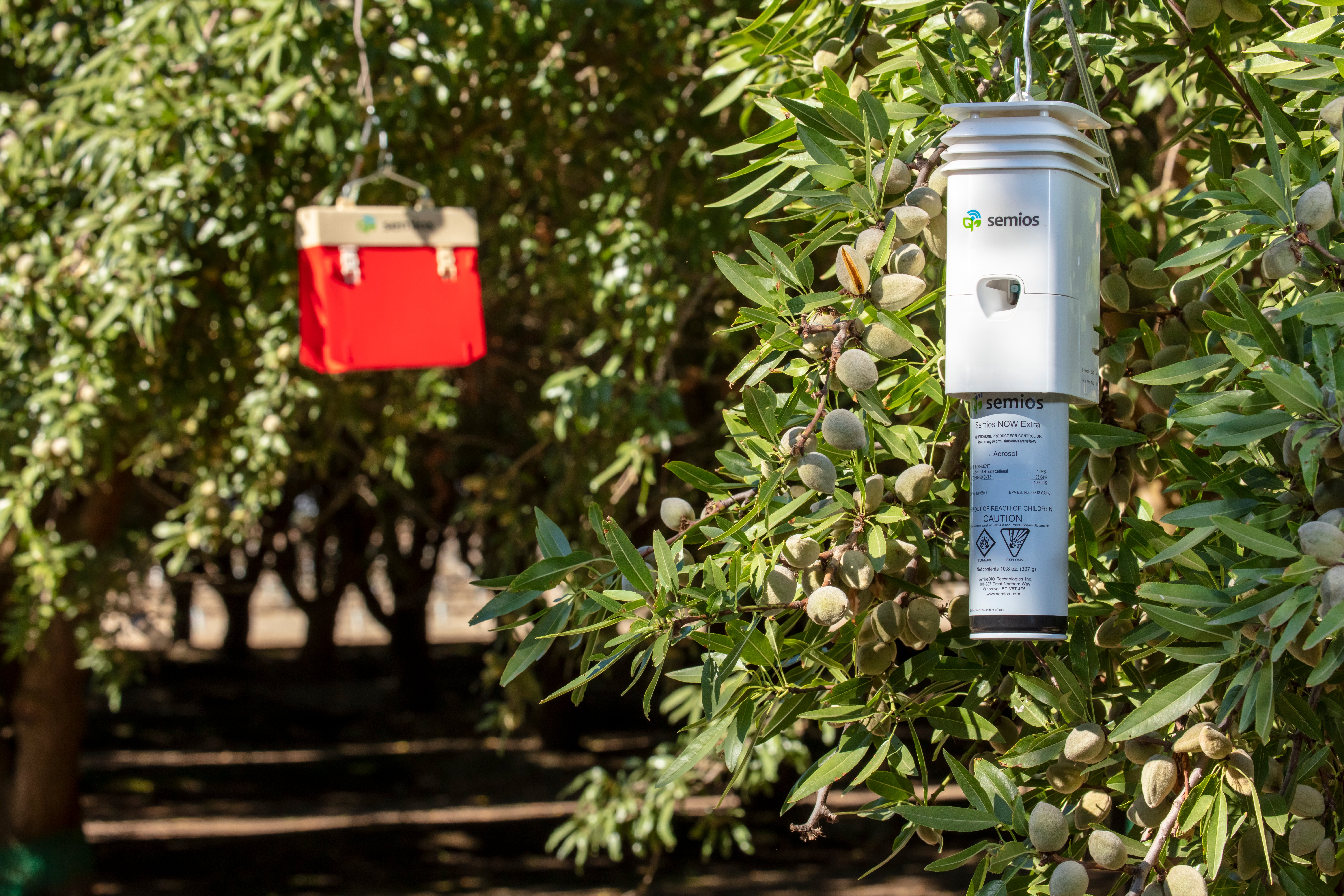
Sure, there's a chance that 1% hull split occurs on or close to 1700 degree days, however, our analysis shows that, depending on your location, you could be anywhere from 10 days early to 12 days late.
Where Did Hull Split Fall in Relation to 1700 Degree Days?
Looking at the in-canopy data from our customer sites in 2018, the black vertical line below indicates 1% hull split. Each colored bar represents a county, the percentage of the total Semios sites in that county and the number of days before or after hull split that 1700 degree days was reached.
2018
For the 2019 season, our in-canopy sensors across thousands of acres in California report that almost no sites reached 1700 degree days prior to hull split.
Waiting for 1700 degree days to apply your first hull split treatment could mean leaving your nonpareils wide open to navel orangeworm (NOW) damage!
2019
Accurate Data Makes the Difference
Semios predicts 1% hull split using your full bloom date and in-canopy conditions.
Our Variable Rate Mating Disruption technique uses the same information to start maximum pheromone release to cover your crop when it's most vulnerable.
Use Alerts to Plan in Advance
Semios automatically alerts your team of your orchard's 1% hull split weeks in advance making logistics less of a challenge. Using Semios hull split predictions along with UCANR guidelines, you can accurately and effectively reduce NOW damage in your almonds.
Per Acre Hull Split Heat Maps Help you Plan Applications
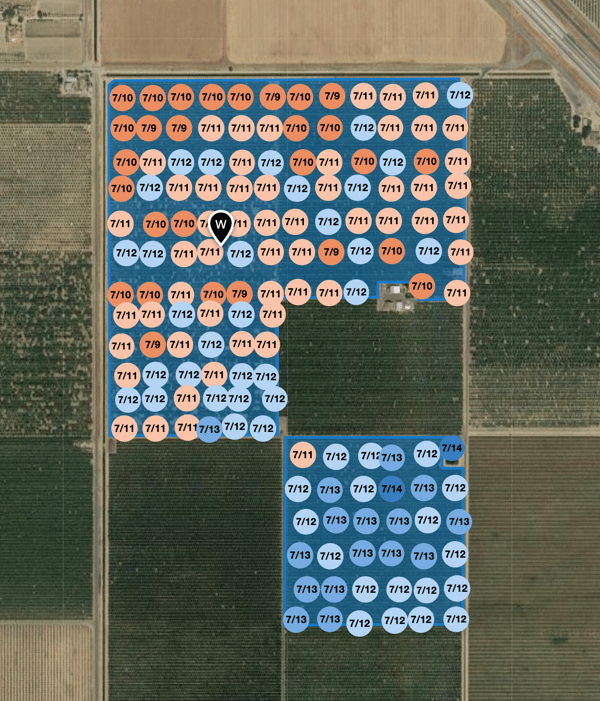
Semios pheromone dispensers measure temperature, humidity, and barometric pressure. This in-canopy climate data is used to predict hull split on a per acre basis so you can identify any variation across your block to target highest risk areas first.
Related blog posts
Understanding Variable Rate Mating Disruption
4 Benefits of In-Canopy Weather Stations
Semios Introduces First Organic Aerosol Pheromone for Navel Orangeworm

